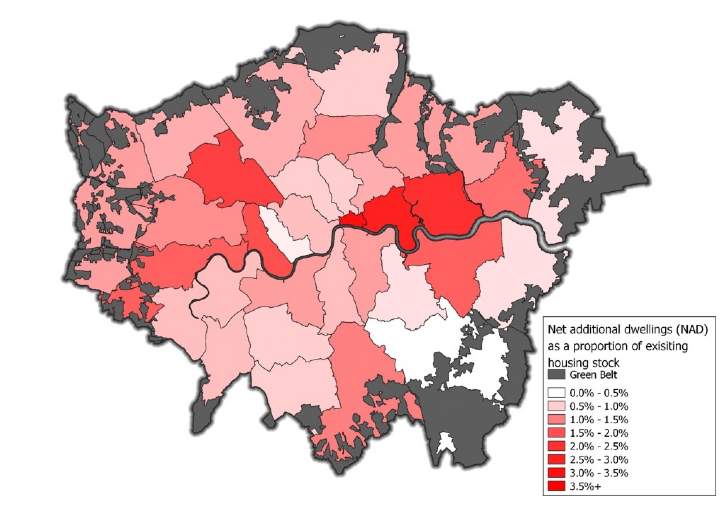The latest housing supply data shows that London is not only missing its annual housing targets, but there is also a divergence in the distribution of net additional dwellings across the capital. Newham and Tower Hamlets lead the way in new homes delivery, with inner London boroughs accounting for 49 per cent of total net additional dwellings over the last three years.
The disparity in delivery across London exacerbates the existing housing crisis, as concentrating development in central locations favours the delivery of high density flats over family housing. Inner city brownfield sites often drive higher land values which increases viability risk across developments, making affordable housing delivery even more challenging.
As ongoing economic uncertainty continues to impact London’s development market, the future delivery of homes is set for a challenging period.
The delivery of new homes across London falls for the second year in a row
Across London there were 37,200 net additions to dwelling stock in the 12 months to March 2022, representing a 9 per cent increase on the previous year. Although a step in the right direction, this remains considerably below City Hall’s annual housing target of 52,000 and less than half of the 86,250 required under the Government’s Standard Method of calculating housing need (2022).
Conversions and change of use continue to contribute to delivery figures, but new build remains the biggest contributor to net additional dwellings, accounting for 85 per cent of delivery across London in the year to March 2022. However, the boost in overall net additional dwellings somewhat disguises the underlying issues facing London’s residential development market, as new build completions actually fell for the second successive year in a row to just over 31,500 homes.
Net Additional Dwellings Breakdown
(1).jpg)










.jpg)